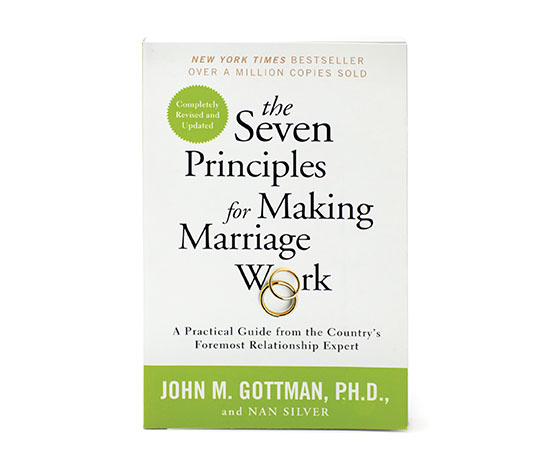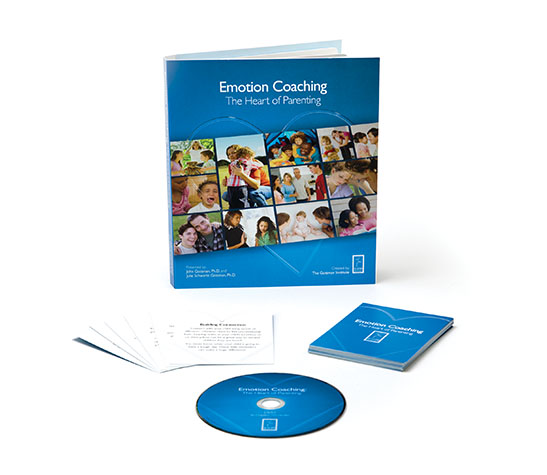Some years ago, when I waited tables for a living and before I worked at The Gottman Institute, I had a manager that I just couldn’t get along with. I constantly felt pressured like I wasn’t doing my job well, and I didn’t appreciate their tendency to disrespectfully bark out orders and level personal criticisms, or even insults, at me and my coworkers (which, unfortunately, are all common behaviors in restaurants).
I knew I had to speak up because the situation was becoming tense and untenable and I needed to keep the job. So I spoke with my brother, who is a licensed therapist and the former head waiter of that restaurant, about how I could approach my manager and air my concerns and complaints without putting my job, or at least my standing in the restaurant, in jeopardy.
His advice was simple, and it lines up perfectly with the Gottman Method of complaining without blaming and using a soft start-up in a romantic relationship. He told me to start with a statement that begins with, “I feel…” and leads into “I need…”, which is what he called an assertive communication model. He also said not to use “you,” or at least not in any sort of blaming context, and that it’s best to use “you” when expressing something you need from that person.
There’s even an easy acronym for communicating assertively, known as D.E.S.C.:
- Describe the problematic situation
- Explain your feelings
- Specify your needs
- Explain the Consequences of both what will happen if the situation doesn’t change and what positive changes you would like to see in the future.
I took a few days to mull this over since, as a kid, I was generally taught to communicate passively because I grew up in a fairly strict household. I wasn’t taught to advocate for myself at an early age, or how to identify and recognize my emotions so I could act accordingly without letting anger or fear overwhelm my ability to communicate effectively.
In other words, I developed a short temper and I would overreact because I regularly bottled up my emotions and didn’t say anything about them until I was ready to explode.
Knowing all of this about myself, the conversation I planned to have with my manager needed to be handled carefully and attentively. I couldn’t blame, nor could I criticize. All I could do was be assertive in my statements and advocate for what I needed to succeed at my work.
When I had the conversation, I asked the manager to join me in a back room of the restaurant so we could talk in private. And then I said something to this effect:
“Sometimes, I feel disrespected or like I’m not doing a good job when directions are yelled at me instead of calmly stated. And I feel confused when I get negative feedback without any sort of direction on how to do better. So, I need you to treat me with more respect and dignity and I need to have more thorough feedback so I can improve my job performance.”
Because I used this assertive style, my manager listened and didn’t get defensive. Not only did they listen calmly while I stated how I felt and what I needed, but they even nodded along in agreement and, once I was finished, thanked me for telling them and promised to work harder to give me the kinds of direction and feedback I need.
This manager was a person who, if you were to approach them with direct criticism or direct blame (e.g. Why do you have to give orders like a dictator? You’re always so disrespectful to everyone!), they’d get in a shouting match with you, send you home, or write you up. And if you tossed some contempt their way (e.g. You’re such a (insert expletive here)!), they’d certainly try to find a way to fire you.
In the months that followed, my manager not only treated me with more respect and offered more constructive feedback and direction, but our conversation also caused that manager to treat other employees the same way. Our working relationship improved, as did the staff’s morale, and the working environment shifted from an authoritarian and critical dynamic to a more collaborative, supportive, and appreciative experience.
Once I had that experience with using assertive communication, I realized that I could apply that style of communication to pretty much all areas of my life. In my prior romantic relationships, all of which ended in disaster, I had a tendency to communicate more irregularly with a tendency to blame or to criticize, or even to be defensive or stonewall, but learning how to communicate assertively ended that pattern.
In my last romantic relationship, I used the “I feel” and “I need” formula regularly, and, as a result, I never saw any of the Four Horsemen arrive, and if they did, it was only for a moment. That relationship didn’t last—we were just in different stages of life and some of our more important life goals didn’t align—but it was the first relationship where I felt comfortable, accepted, supported, and at peace. When we did fight, we fought in a healthy way. It was the first truly positive romantic relationship I had been in.
And what that experience taught me, even though it ended, was what a good relationship can look and feel like emotionally for me. It taught me what I need in a partner. And even though I learned how to give feedback and communicate assertively at work, I’ve found that using that communication style can be effective and healthy in any relationship.
The Marriage Minute is an email newsletter from The Gottman Institute that will improve your marriage in 60 seconds or less. Over 40 years of research with thousands of couples has proven a simple fact: small things often can create big changes over time. Got a minute? Sign up below.










